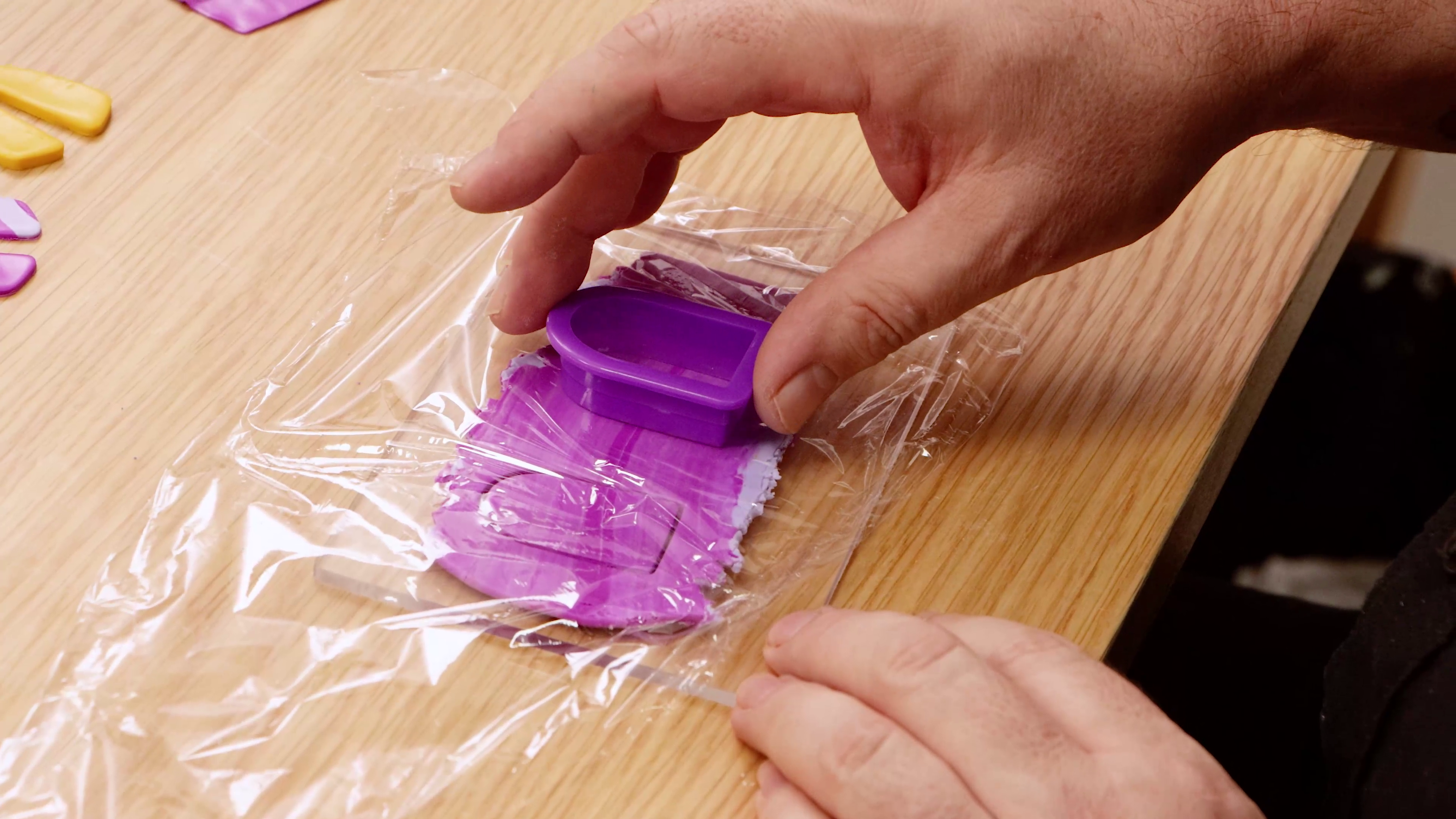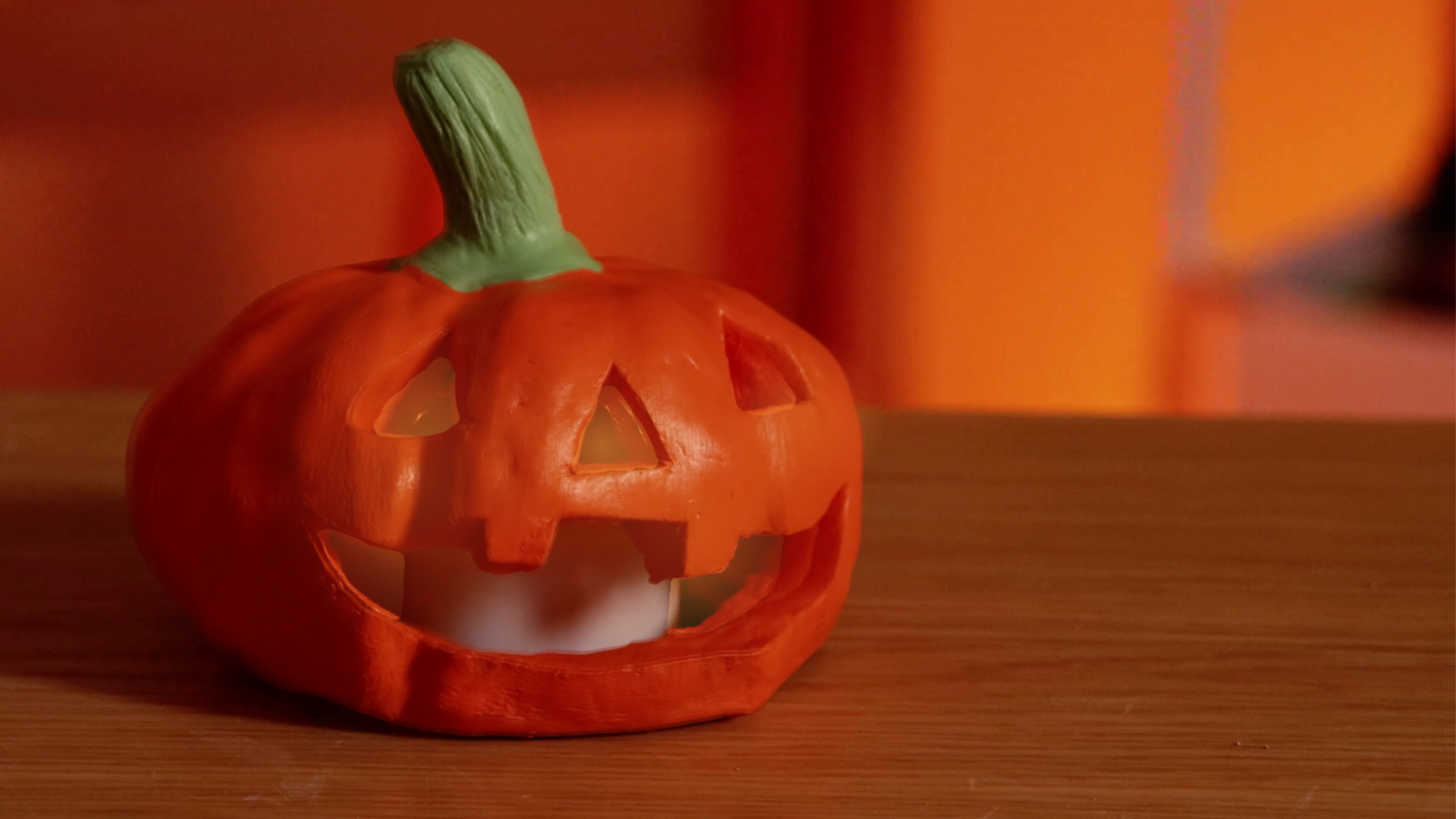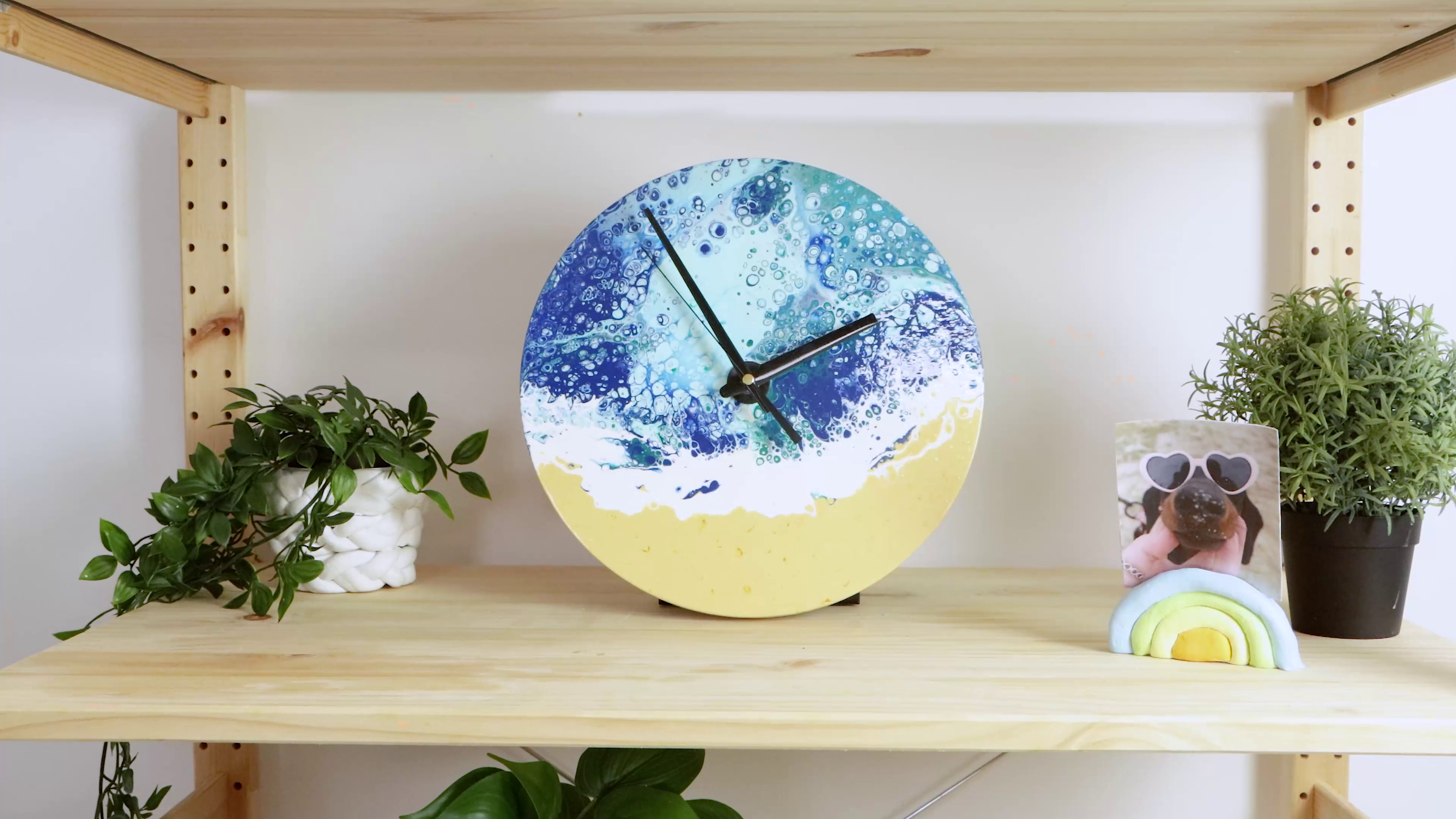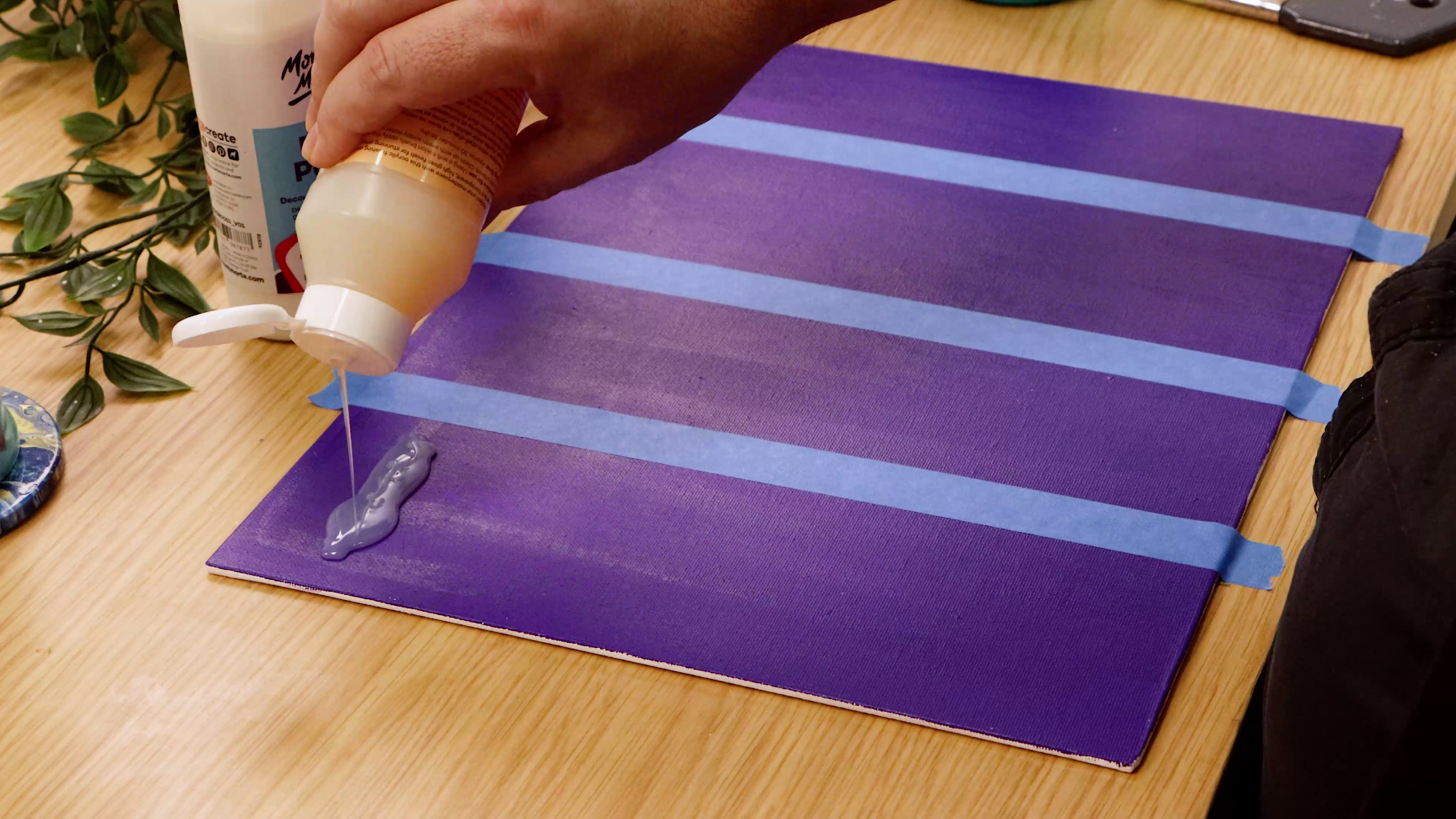Create an impressionistic cow painting with acrylics
Join Joe as he walks you through how to paint an impressionist style cow artwork using acrylics. Learn to create texture, highlights and shadows to bring this happy little cow to life.
1. Outline
Begin by copying the outline of the cow onto the canvas with a HB pencil. Refer to the reference image for this outline.
2. Background
Once the outline is finished, apply a ground tone over the entire canvas. Use Yellow Ochre and the largest brush in the set to do this. Dip the brush into water to thin the paint so that the outline can be seen under the coat. To paint in the background squeeze out some Phthalo Blue and Titanium White onto your palette. Roughly mix it and apply onto the canvas around the cow. Add more Phthalo Blue into the mix as you move down the canvas. Don’t mix the two colours together too much so that the coat applied has some texture. This tends to add more interest than what a flat coat would.
3. Painting the head
Paint Titanium White on to the head down to the nose, but tint the white with a touch of Yellow Ochre and apply the paint with a dabbing motion to get a little texture on there. Moving to the nose and muzzle, begin with a glaze of Yellow Pink. Allow this to dry and then paint the hollows of the nostrils with Paynes Grey. Then, with a mixture of Yellow Pink and a touch of Paynes Grey, paint in the front portion of the nose and the chin. Create a new mix of Yellow Pink lightened with Titanium White and paint this into the top plane of the nose and the lighter areas around the edge of the nostrils. We can then paint Titanium
White into the lower side of the chin and onto the side of the nostrils.
4. Painting the ears
There are black patches either side of the cow’s head. Use Paynes Grey in the dark areas around the eye socket and cheeks and then lighten the Paynes Grey with some Titanium White and paint this around the black patches. Although the fur on the side of the cows face is the same colour, the way the light falls on it causes it to look like a different tone in highlight. We can then paint in the ear and then detail the eye. Follow the same steps for the patch on the other side of the head. The head is done, and we can move onto the body.
5. Painting the body white
The body has subtle shadows over it and the best way to suggest shadows with acrylic is to build up the tones. First lay on some Paynes Grey mixed with a touch of Titanium White into any shadow areas. Allow this to dry and glaze some white over the area. The darker areas of tone will still be able to be seen beneath. Create a new mix from Titanium White, a touch of Yellow Ochre and a touch of Paynes Grey tinted with some Burnt Umber and reapply this over the areas of shadow. Then lay Titanium White over the areas of highlight and blend the tones smoothly together with a damp brush.
6. Painting the body black
The black patches on the body can then be laid in with Paynes Grey and any lighter areas can be laid in with Titanium White mixed with the grey.
7. Final details
The final step is to add any final details to the cow. This involves applying Titanium White in places to suggest highlights and any little black spots.
Material List
- Double Thick Studio Canvas Pine Frame 50.8 x 60.9cm (20 x 24in)
- Brush Wallet Set Premium 15pce
- Acrylic Palette Signature 30 x 40cm (12 x 16in)
- Satin Acrylic Paint Premium 75ml (2.5 US fl.oz) Tube - Titanium White
- Satin Acrylic Paint Premium 75ml (2.5 US fl.oz) Tube - Yellow Pink
- Satin Acrylic Paint Premium 75ml (2.5 US fl.oz) Tube - Phthalo Blue
- Satin Acrylic Paint Premium 75ml (2.5 US fl.oz) Tube - Raw Umber
- Satin Acrylic Paint Premium 75ml (2.5 US fl.oz) Tube - Paynes Grey
- Satin Acrylic Paint Premium 75ml (2.5 US fl.oz) Tube - Yellow Ochre





























